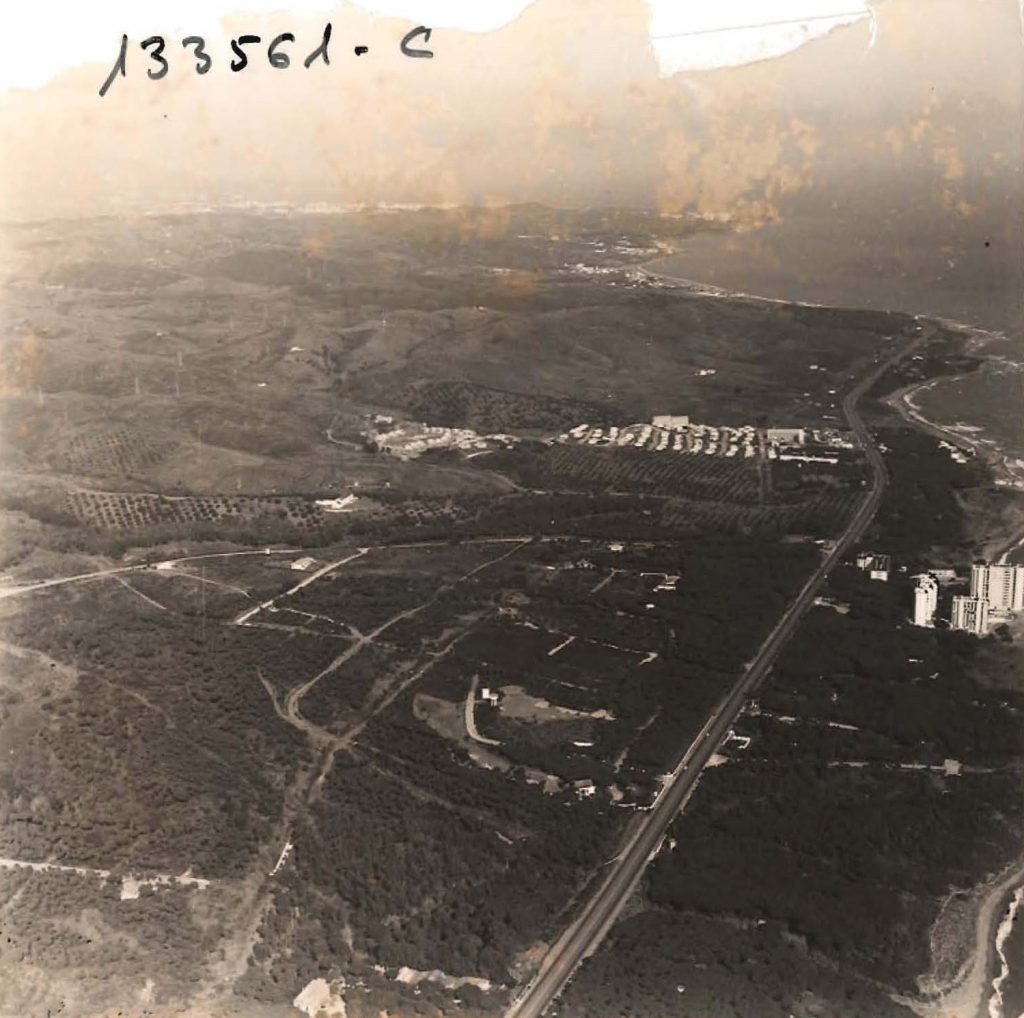Download our book “EUC Calahonda 50 Years History”
We compiled a very interesting book in our 50th Anniversay(2013) and we would love you to read it online, for free. It includes the information in these pages and much more.
– Page 1 –
Por Juan de Orbaneja (urbanizador).
 The story of the urbanisation at Sitio de Calahonda is like any story that focuses on individuals or relatively small groups of people: they can be taken either as ‘prototypical’ or, conversely, be considered unique and unrepeatable. The truth is that it is a matter of the viewpoint with which the story is written. I have no intention of writing it in order to lead the reader to certain conclusions. I believe, then, that in many ways Calahonda can be considered very special, while in others there is little doubt that its development has been similar to that of many other urbanisations on the Costa. What is certainly true for me, though, is that it has been a unique experience, one in which my whole family has been involved and to which I have dedicated a good part of my life. I have no need to deny the pride I feel at having been a major part of the development of this great urbanisation – great for its size and also for its success and qualities – and to have contributed in this way to the development of the entire Costa del Sol.
The story of the urbanisation at Sitio de Calahonda is like any story that focuses on individuals or relatively small groups of people: they can be taken either as ‘prototypical’ or, conversely, be considered unique and unrepeatable. The truth is that it is a matter of the viewpoint with which the story is written. I have no intention of writing it in order to lead the reader to certain conclusions. I believe, then, that in many ways Calahonda can be considered very special, while in others there is little doubt that its development has been similar to that of many other urbanisations on the Costa. What is certainly true for me, though, is that it has been a unique experience, one in which my whole family has been involved and to which I have dedicated a good part of my life. I have no need to deny the pride I feel at having been a major part of the development of this great urbanisation – great for its size and also for its success and qualities – and to have contributed in this way to the development of the entire Costa del Sol.
Calahonda – the historic name of the area limiting the coast from Mijas and Marbella – can in certain ways be seen as a specific subject, without comparison. It is unusual, for instance, that we developers set ourselves limits in its construction: we could have quite legally built up to twelve storeys, but we stopped at five. Unusual, too, is the fact that a process of urbanisation should begin, develop and culminate in so transparent a manner, without conflict among groups, families or opposing interests.
 However, Calahonda can also be seen as a case similar to many other urbanisations on the coast of Málaga in as much as we have all been pioneers of what is today one of the great tourist destinations of the world. Those of us who came here from elsewhere have set deep roots in Málaga and have given our work a sense of creativity. None of the ‘historic’ developers have made fortunes with their contribution to this emporium they founded on the Costa del Sol, nor have they spawned multiple enterprises far away. A few years ago one of my companions in this four-decade adventure was reviewing his efforts as a developer. His conclusion was that those initial investments, had they been made to ‘work for him’ on the money market, would probably have yielded at least four or five times the profit. He added that this probable yield might have been made while he was lying on the beach with a book, instead of living with the constant ups and downs of the uncountable problems involved not only in this developer’s adventures, but also in the supplementary tasks of managing, persuading and even pressuring all levels of the Administration so that the Costa del Sol could become a reality. Nevertheless, he, like many others and myself, chose to dedicate our lives to this work. The reward of seeing the buildings go up are what balances out the effort, the worry and the sometimes dramatic situations we have lived.
However, Calahonda can also be seen as a case similar to many other urbanisations on the coast of Málaga in as much as we have all been pioneers of what is today one of the great tourist destinations of the world. Those of us who came here from elsewhere have set deep roots in Málaga and have given our work a sense of creativity. None of the ‘historic’ developers have made fortunes with their contribution to this emporium they founded on the Costa del Sol, nor have they spawned multiple enterprises far away. A few years ago one of my companions in this four-decade adventure was reviewing his efforts as a developer. His conclusion was that those initial investments, had they been made to ‘work for him’ on the money market, would probably have yielded at least four or five times the profit. He added that this probable yield might have been made while he was lying on the beach with a book, instead of living with the constant ups and downs of the uncountable problems involved not only in this developer’s adventures, but also in the supplementary tasks of managing, persuading and even pressuring all levels of the Administration so that the Costa del Sol could become a reality. Nevertheless, he, like many others and myself, chose to dedicate our lives to this work. The reward of seeing the buildings go up are what balances out the effort, the worry and the sometimes dramatic situations we have lived.
Un compañero de estas cuatro décadas de vicisitudes hacía balance, hace unos pocos años, de su esfuerzo urbanizador, y concluía que aquellas inversiones iniciales, puestas a ‘trabajar’ en los circuitos del dinero, seguramente le hubieran redituado al menos cuatro o cinco veces más beneficios. Y acotaba que ese probable fruto lo hubiera logrado mientras permanecía leyendo en una tumbona de la playa, en vez de haber vivido en constante agitación y zozobra, tanto por los incontables problemas que han surgido durante esta prolongada aventura urbanizadora como por la gran tarea suplementaria de gestionar, convencer y hasta presionar ante los distintos niveles de la Administración para poder concretar los avances imprescindibles para que la Costa del Sol cobrara existencia real. Sin embargo, tanto él como yo y muchos otros, hemos elegido dedicar nuestra vida a este trabajo y la satisfacción de ver en pie la obra realizada hace un gran peso en el otro platillo de la balanza y equilibra los esfuerzos, las inquietudes y las situaciones, por momentos hasta dramáticas, que hemos vivido.
For my self I can say that I had to assume a principal role as from 1966, almost a quarter century ago and at a time during which Sitio de Calahonda was born, developed and reached its peak: 2002 saw the completion of sales of all available plots, which meant that the original 280 hectares are now peppered with hundreds of smaller urbanisations. The founder of the urbanisation, and the one whose idea it was, was my father, Don José de Orbaneja, who arrived here in 1963 and bought a large estate -in fact, he put two estates together- from their original owners, Gerardo, Enrique and Elvira Vandulken. To carry out his project he was supported by one fundamental experience: the development of a similar project on an enormous 600-hectare estate, Segur de Calafell, on the Costa Dorada at Tarragona. My father arrived in Málaga with a clear idea of urbanising an extensive piece of land, trusting that the area would have its rewards -time would prove him right.
The main feature of that estate was the fort-house of Calahonda, to which access was gained from the N-340 up a track in the middle of the land, more or less up what is today Calle Conde de Jordana. The old fort-house dates from approximately the same time as the watchtowers that mark the coast of Málaga.
 +34 695 223 964
+34 695 223 964

